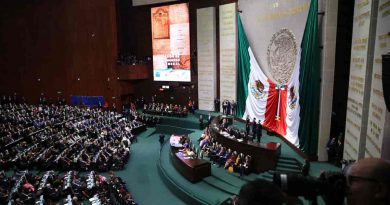Twitter and Diplomacy: How Social Media Revolutionizes Interaction With Foreign Policy
By Bjorn Schwarzenbach
Staff Writer
In the past few weeks, events like the United Nations General Assembly and Pope Francis’s visit to the United States have garnered huge press and media attention. Among the traditional print and visual media coverage, social media platforms like Twitter have seen the most traffic and innovative use. Here, political discussions and information-sharing were divided between traditional diplomatic practices at the UN and a modern way of interaction online.
Next year, Twitter will be celebrating ten years of revolutionizing communications technology. In the fast-paced world of diplomacy and foreign affairs, breaking news can become viral as quickly as one can read tweets and engage other users. One recent example of direct and quick engagement through Twitter was the short exchange in 2013 between Iranian President Hassan Rouhani and Twitter co-founder Jack Dorsey over Internet freedom.
The biggest change Twitter has brought to foreign policy has been greater access to unfiltered information and worldwide engagement regardless of nationality or political status. Additionally, the increasing number of cellphone users in the developing world further democratizes information-sharing. As a result, citizens and civil society are becoming increasingly able to hold governments accountable for policies and for statements made by politicians.
One skeptic, James Carafano of the Heritage Foundation, noted in an interview with Voice of America that “Twitter really wasn’t created for diplomacy. Twitter’s not even created to have a conversation.”
This contradicts the Department of State’s eDiplomacy initiative, developed under Hillary Clinton’s tenure as secretary, where the goal was to engage more people in more countries. In a Brookings Institute’s report, Fergus Hanson notes that the State Department has been able to “reach a larger direct audience than the paid circulation of the ten largest U.S. dailies and employing an army of diplomat-journalists to feed its 600-plus platforms through embassies and consulates.”
In Foreign Policy, Larry Diamond of the Hoover Institution argues that while new forms of media have given a voice to the previously unheard masses, Twitter and other social media platforms have also increased the ability for authoritarian states like Russia and Iran to tightly control and censor dissenters with better efficiency.
One example of this two-sided coin was the negated outcome of Iran’s 2009 Green Revolution, in which the mobilization of protesters against the regime through Twitter did not result in regime change. Experts cite the lack of centralized organization among the protesters and technology-based crackdowns by the government as factors contributing to the failed revolution.
An undisputed positive outcome of Twitter has been the increase in digital public diplomacy efforts by governments and foreign representatives. One organization on the forefront of digital public diplomacy has been the Digital Diplomacy Coalition, through which public stakeholders can leverage social technologies such as Twitter for diplomacy and foreign policy aims. While the group also includes stakeholders like private technology companies, civil society groups and foreign missions like the Swiss Consulate-General in New York City and the UN Foundation have been able to influence and engage online conversations about advocacy efforts.



RT @antonioderuda: Twitter and Diplomacy: How Social Media Revolutionizes Interaction With Foreign Policy http://t.co/aQLq8ciI5c #digitaldi…
RT @antonioderuda: Twitter and Diplomacy: How Social Media Revolutionizes Interaction With Foreign Policy http://t.co/aQLq8ciI5c #digitaldi…
Twitter and Diplomacy: How Social Media Revolutionizes Interaction With Foreign Policy http://t.co/0pMdjEkBPU
RT @antonioderuda: Twitter and Diplomacy: How Social Media Revolutionizes Interaction With Foreign Policy http://t.co/aQLq8ciI5c #digitaldi…
RT @antonioderuda: Twitter and Diplomacy: How Social Media Revolutionizes Interaction With Foreign Policy http://t.co/aQLq8ciI5c #digitaldi…
RT @antonioderuda: Twitter and Diplomacy: How Social Media Revolutionizes Interaction With Foreign Policy http://t.co/aQLq8ciI5c #digitaldi…
Twitter and Diplomacy: How Social Media Revolutionizes Interaction With Foreign Policy http://t.co/aQLq8ciI5c #digitaldiplomacy